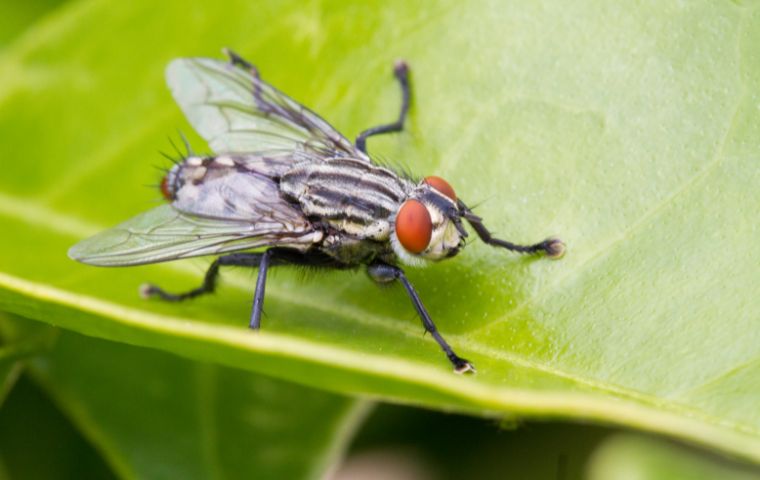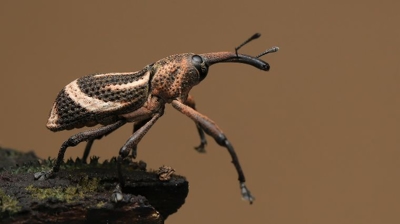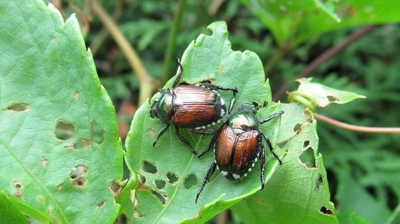
Flesh Flies
What Are Flesh Flies?
Flesh flies (Sarcophagidae) are a family of flies known for their association with decaying organic matter, carrion, and, in some cases, live or dead animal tissue. They are medium to large in size (usually 10–14 mm long) and are characterized by their grayish bodies with three distinct black stripes on the thorax and a checkerboard pattern on the abdomen. Their red eyes and bristly appearance further distinguish them from other flies.
Are Flesh Flies Harmful?
Flesh flies (Sarcophagidae) can be harmful in several ways, primarily due to their association with decaying organic matter and their potential to spread diseases. Below are some of the concerns related to their presence:
Disease Transmission
Flesh flies frequently come into contact with decomposing animal remains, feces, and garbage, making them potential vectors for bacteria and pathogens. They can contaminate surfaces, food, and wounds, spreading harmful microorganisms that cause:
- Foodborne Illnesses: Bacteria such as Salmonella and E. coli can be transmitted, leading to symptoms like diarrhea, vomiting, and fever.
- Dysentery: Flesh flies can carry pathogens that cause dysentery, a severe gastrointestinal disease.
- Other Infections: They may spread bacteria leading to skin infections, conjunctivitis, or respiratory issues.
Myiasis (Tissue Infestation)
Some species of flesh flies are capable of causing myiasis, a condition where fly larvae infest living or dead tissue. This can occur in:
- Humans: Larvae may enter open wounds, skin lesions, or even body cavities, leading to painful infestations that require medical intervention.
- Livestock & Pets: Flesh flies can infest wounds, sores, or neglected areas on animals, leading to significant health issues and economic losses in the agricultural industry.
Pest and Nuisance Issues
- Indoor Infestations: If a dead rodent or animal is inside walls, attics, or crawl spaces, flesh flies may appear in large numbers when their larvae mature into adult flies.
- Unpleasant Presence: Their attraction to decaying material and feces makes them unsanitary pests around homes, businesses, restaurants, and farms.
- Rapid Reproduction: Because they deposit live maggots instead of eggs, infestations can occur quickly, making control difficult if sanitation measures are not in place.
Economic and Veterinary Impact
- Agricultural Concerns: Flesh flies can parasitize livestock, reducing productivity and requiring veterinary treatments.
- Food Industry Risks: In food production or processing facilities, their presence can lead to contamination, product recalls, and regulatory violations.
Flesh Fly Appearance
Flesh flies (Sarcophagidae) have a distinctive appearance that makes them relatively easy to identify. Here are some of their physical characteristics:
Size & Shape
- Medium to large-sized flies, typically 10–14 mm (0.4–0.6 inches) long
- Stout, bristly bodies with a slightly humped thorax
Color & Markings
- Grayish body with three prominent black stripes on the thorax
- Checkered or spotted abdomen, often gray and black
- Red eyes, sometimes large and prominent
- Dark legs, usually black or dark brown
Wings & Flight
- Transparent wings with visible veins
- Strong, fast flyers, often seen hovering around decaying matter
Unique Features
- Unlike many other flies, flesh flies are larviparous, meaning they deposit live maggots instead of laying eggs
- Some species have a reddish or orange-brown tip on the abdomen
Flesh Fly Habitat
You are most likely to encounter flesh flies in areas where decaying organic matter is present, as they are attracted to carrion, feces, and rotting food. Below are the most common locations where flesh flies tend to appear:
Outdoors
- Near Dead Animals: Flesh flies are strongly attracted to carcasses of rodents, birds, and other animals. If there is a dead animal nearby, you may see an influx of these flies.
- Garbage & Dumpsters: Open or overflowing trash bins with decomposing food scraps can attract flesh flies.
- Compost Piles: If compost is not properly managed, it can become a breeding ground.
- Animal Feces: Pet waste, manure, and other animal droppings can serve as a food source for larvae.
- Slaughterhouses & Farms: Locations with livestock, especially those with open wounds or decaying organic waste, often experience infestations.
Indoors
- Around Dead Rodents or Pests: If a rodent or small animal has died inside a wall, attic, or crawl space, flesh flies may appear as larvae feed on the carcass and mature into adults.
- Trash Bins & Food Storage Areas: Poorly sealed garbage cans or rotting organic matter inside the home can attract them.
- Restrooms & Sewage Areas: Since they are drawn to decaying matter, neglected restrooms or plumbing issues can become breeding sites.
- Hospitals & Veterinary Clinics: In rare cases, flesh flies can infest open wounds or medical waste.
Flesh Fly Diet
Flesh flies (Sarcophagidae) have a diet primarily based on decaying organic matter. Their feeding habits vary depending on their life stage:
Adult Flesh Flies
- Adult flesh flies primarily feed on liquefied organic materials, including:
- Nectar and plant juices – They sometimes feed on flower nectar or sugary plant excretions.
- Rotting fruit and vegetables – Decomposing organic matter can attract them.
- Animal excretions (feces) – They often feed on and lay larvae in dung or waste.
- Liquids from decaying meat and carrion – They lap up juices from decomposing carcasses.
Flesh Fly Larvae (Maggots)
- Flesh fly larvae are more carnivorous and feed on:
- Decaying animal carcasses – They thrive in dead rodents, birds, and other animals.
- Open wounds and necrotic tissue – Some species can infest live animals, consuming dead or infected tissue.
- Garbage and decomposing organic waste – If conditions are favorable, maggots may develop in rotting food or trash.
- Parasitic hosts – Some species lay their larvae inside the bodies of live insects, amphibians, or even mammals, where they develop by consuming the host’s tissue.
Since flesh flies are scavengers, they play a role in breaking down decaying matter, but they can also be problematic in homes, businesses, and agricultural settings.

Flesh Fly Life Cycle
The life cycle of flesh flies (Sarcophagidae) consists of four main stages: egg (skipped in most species), larva, pupa, and adult. The entire cycle can take anywhere from 8 to 21 days, depending on environmental conditions such as temperature and food availability.
1. Egg Stage (Usually Skipped)
- Unlike most other flies, flesh flies are larviparous, meaning they do not lay eggs. Instead, they deposit live larvae (maggots) directly onto a food source (e.g., carrion, feces, or decaying matter).
- This adaptation gives their offspring an advantage, as they can begin feeding immediately, increasing survival rates.
2. Larval Stage (Maggots)
- Upon being deposited, the maggots immediately start feeding on the organic matter.
- There are three instar stages, during which the maggots grow and molt.
- This stage typically lasts 4 to 5 days, depending on temperature and food availability.
- Once fully grown, the larvae leave the food source and burrow into soil, debris, or a secluded area to pupate.
3. Pupal Stage
- The maggots form a dark, hardened puparium (similar to a cocoon).
- Inside, the transformation into an adult fly occurs over 3 to 10 days, depending on conditions.
- The fly emerges as an adult, ready to mate and restart the cycle.
4. Adult Stage
- Freshly emerged adults begin mating within a few days.
- Females seek out suitable sites (carrion, feces, wounds, or decomposing material) to deposit their larvae.
- Adults live for several weeks, during which females can deposit multiple batches of larvae.
- A single female can produce hundreds of larvae in her lifetime.
Since flesh flies reproduce quickly, they can become a nuisance if conditions are favorable.

Hear From Our Happy Customers
-
"Very Knowledgeable"
The tech that arrived was courteous, professional, and very knowledgeable. He was Great.
- Uerial I. -
"Exceeds Expectations"
I can’t say enough positive things about this company... The tech that came out, Jarvis went above and beyond my expectations. Thank you guys, I will continue using your services.
- Jake M. -
"Fantastic & Patient"
Jarvis was fantastic and patient. He answered my questions with an in-depth explanation and addressed all of my areas of concern. Would love for him to be my assigned tech going forward. Well done!
- Yonnette M. -
"Professional & Considerate"
I’m pleased with Miche services. Jarvis came today. Professional and considerate. Thank you!
- Judy B. -
"Great Communication"
Tech was on time, communication was great, and he accommodated my needs.
- Alonzo W. -
"Wonderful Service"
Wonderful service. Jarvis is great. Took care of everything I needed. Thank you!
- Henry P.



